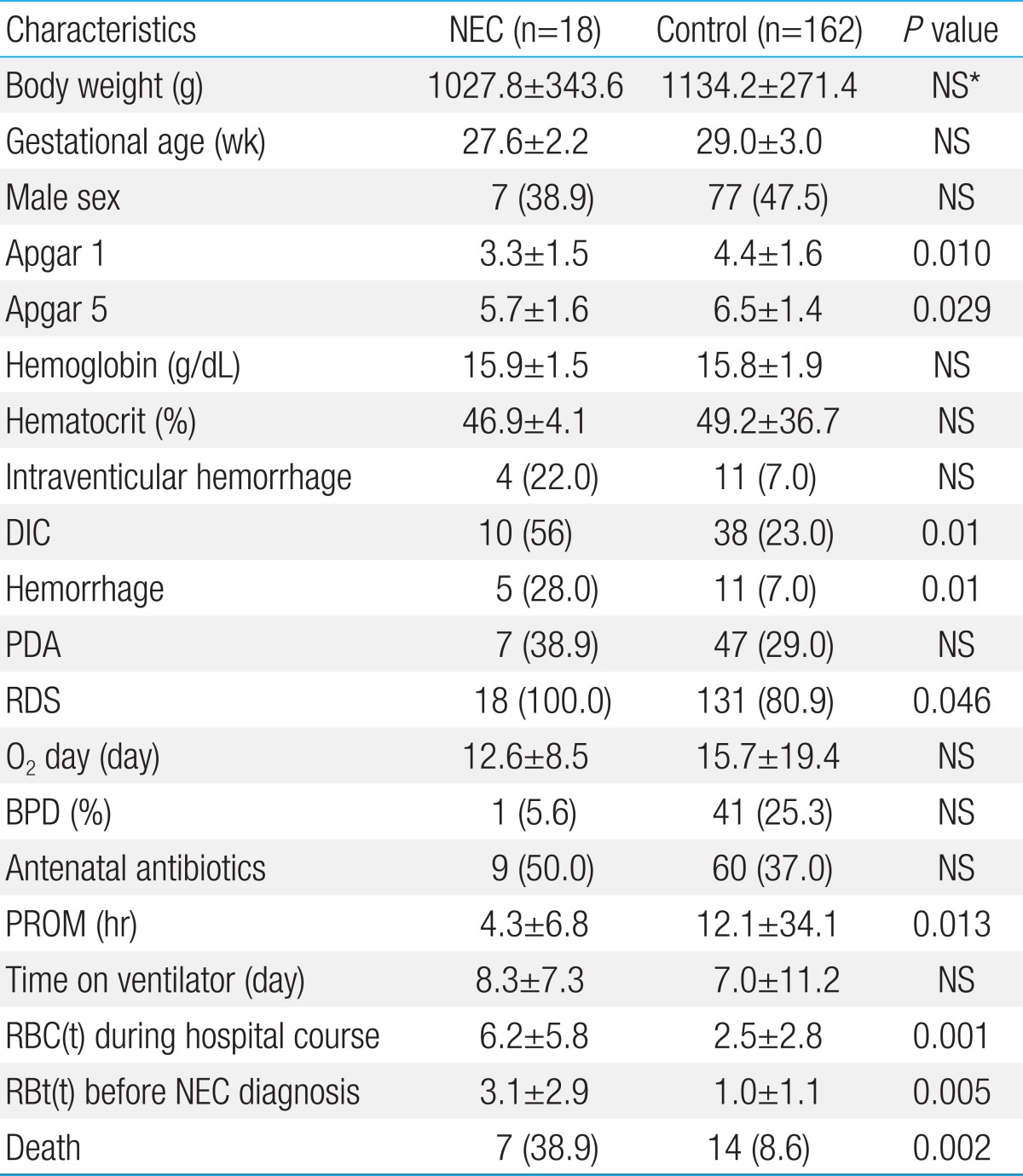2. Luig M, Lui K. NSW & ACT NICUS Group. Epidemiology of necrotizing enterocolitis--Part II: Risks and susceptibility of premature infants during the surfactant era: a regional study. J Paediatr Child Health 2005;41:174ŌĆō179.


4. Brook I. Microbiology and management of neonatal necrotizing enterocolitis. Am J Perinatol 2008;25:111ŌĆō118.


5. Neu J. Neonatal necrotizing enterocolitis: an update. Acta Paediatr Suppl 2005;94:100ŌĆō105.


6. Kafetzis DA, Skevaki C, Costalos C. Neonatal necrotizing enterocolitis: an overview. Curr Opin Infect Dis 2003;16:349ŌĆō355.


7. Mohamed A, Shah PS. Transfusion associated necrotizing enterocolitis: a meta-analysis of observational data. Pediatrics 2012;129:529ŌĆō540.


8. Blau J, Calo JM, Dozor D, Sutton M, Alpan G, La Gamma EF. Transfusion-related acute gut injury: necrotizing enterocolitis in very low birth weight neonates after packed red blood cell transfusion. J Pediatr 2011;158:403ŌĆō409.


9. Paul DA, Mackley A, Novitsky A, Zhao Y, Brooks A, Locke RG. Increased odds of necrotizing enterocolitis after transfusion of red blood cells in premature infants. Pediatrics 2011;127:635ŌĆō641.


12. Stichtenoth G, Demmert M, Bohnhorst B, Stein A, Ehlers S, Heitmann F, et al. Major contributors to hospital mortality in very-low-birth-weight infants: data of the birth year 2010 cohort of the German Neonatal Network. Klin Padiatr 2012;224:276ŌĆō281.


14. Ta BD, Roze E, van Braeckel KN, Bos AF, Rassouli-Kirchmeier R, Hulscher JB. Long-term neurodevelopmental impairment in neonates surgically treated for necrotizing enterocolitis: enterostomy associated with a worse outcome. Eur J Pediatr Surg 2011;21:58ŌĆō64.


16. Gregory JR, Campbell JR, Harrison MW, Campbell TJ. Neonatal necrotizing enterocolitis. A 10 year experience. Am J Surg 1981;141:562ŌĆō567.


17. Egan EA, Mantilla G, Nelson RM, Eitzman DV. A prospective controlled trial of oral kanamycin in the prevention of neonatal necrotizing enterocolitis. J Pediatr 1976;89:467ŌĆō470.


18. Polin RA, Pollack PF, Barlow B, Wigger HJ, Slovis TL, Santulli TV, et al. Necrotizing enterocolitis in term infants. J Pediatr 1976;89:460ŌĆō462.


19. Kliegman RM, Pittard WB, Fanaroff AA. Necrotizing enterocolitis in neonates fed human milk. J Pediatr 1979;95:450ŌĆō453.


20. Hsueh W, Caplan MS, Qu XW, Tan XD, De Plaen IG, Gonzalez-Crussi F. Neonatal necrotizing enterocolitis: clinical considerations and pathogenetic concepts. Pediatr Dev Pathol 2003;6:6ŌĆō23.


21. Kliegman RM, Stanton B, St. Geme J, Schor N, Behrman RE. Nelson textbook of pediatrics. 2011;19th ed. Philadelphia: Elsevier Saunders, :601ŌĆō603.
24. Simmonds A, LaGamma EF. Addressing the "New" NEC: Part I: rediscovering the basics. Indian J Pediatr 2006;73:1011ŌĆō1018.








 PDF Links
PDF Links PubReader
PubReader PubMed
PubMed Download Citation
Download Citation


